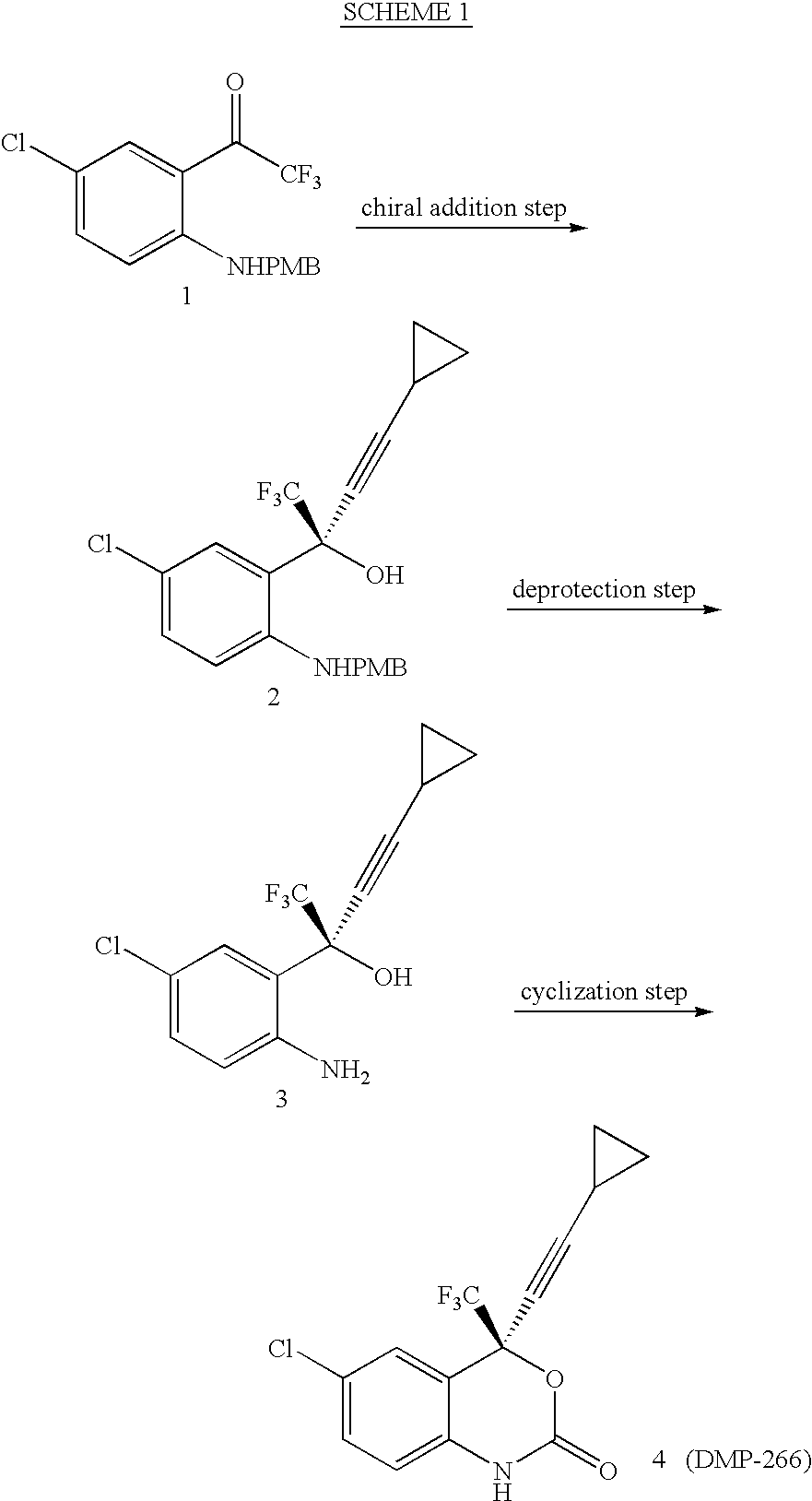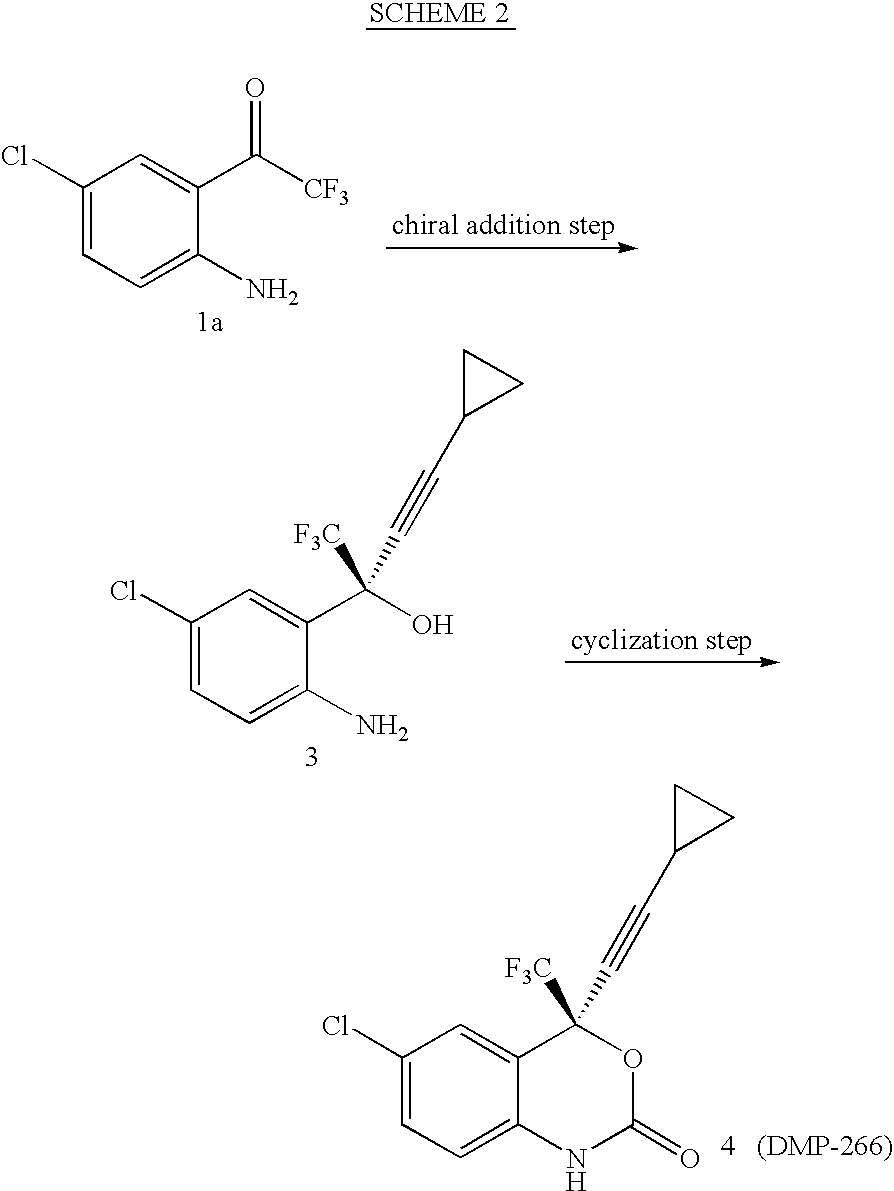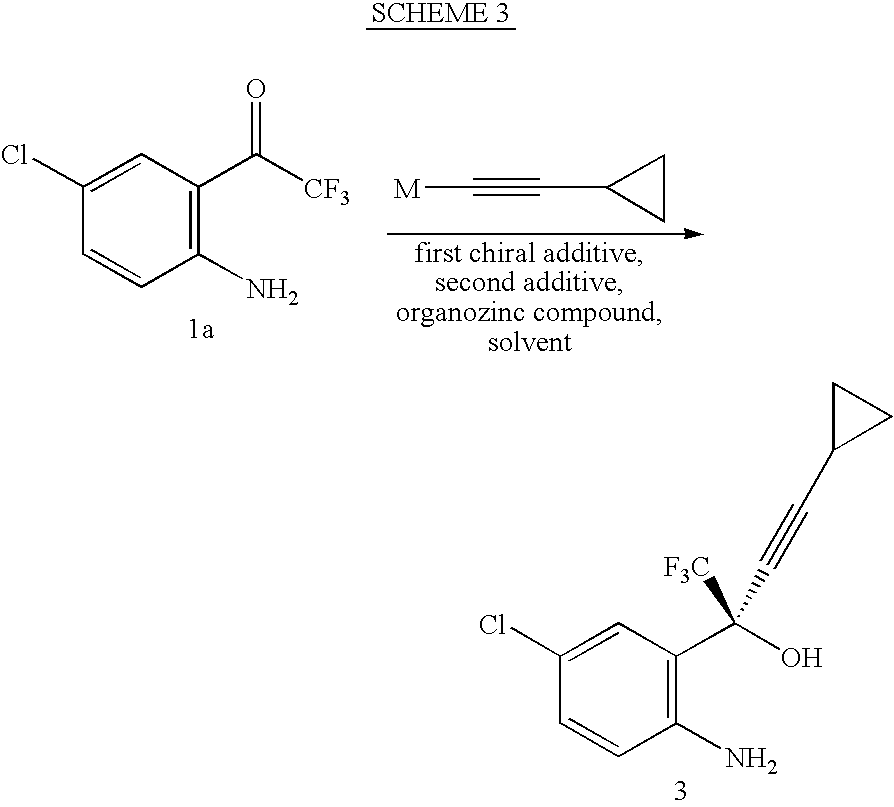Compressed tablet formulation
a tablet and formulation technology, applied in the direction of capsule delivery, coatings, organic active ingredients, etc., can solve the problems of drug loss, difficult management of compressed tablet form,
- Summary
- Abstract
- Description
- Claims
- Application Information
AI Technical Summary
Problems solved by technology
Method used
Image
Examples
example 1
[0065]
MaterialsAmountMolMWKetone 1a1.00kg g4.47223.58(1R, 2S)-N-pyrrolidinyl norephedrine1.35kg6.58205.30cyclopropyl acetylene361.9g5.4766.10n-BuMgCl (2.0 M in THF)2.68L5.372,2,2-trifluoroethanol (99%)429.5g4.29100.04ZnEt2 (0.892 M in hexane)6.02L5.37THF9.36L30% K2CO3550mL30% citric acid2.0LToluene (for crystallization, 2 mL / g of 4)2.6LHeptane (for crystallization, 4 mL / g of 4)5.2L
[0066]To a solution of trifluoroethanol and (1R,2S)-N-pyrrolidinyl norephedrine in THF (9 L) under nitrogen is added a solution of diethylzinc in hexane at 0° C. slowly enough to keep the temperature below 30° C. The mixture is stirred at room temperature for 0.5˜1 h. In another dry flask a solution of chloromagnesium cyclopropyl acetylide is prepared as follows: To neat cyclopropyl acetylene at 0° C. is added a solution of n-butylmagnesium chloride slowly enough to keep the internal temperature ≦30° C. The solution is stirred at 0° C. for ˜40 min and transfered to the zinc reagent via cannula with 0.36 L ...
example 2
[0067]
FWgmLmmolequivamino alcohol 328910034614-nitrophenylchloroformate201.673.23631.05KHCO3100454501.32N KOH563466922.0H2O654MTBE500
[0068]To a three necked round bottom flask, equipped with a mechanical stirrer, nitrogen line, and thermocouple, was charged the solid amino alcohol 3, MTBE (500 mL), and aqueous KHCO3 (45 g in 654 mL H2O). Solid 4-nitrophenyl chloroformate was added, in 4 batches, at 25° C. During the addition the solution pH was monitored. The pH was maintained between 8.5 and 4 during the reaction and ended up at 8.0. The mixture was stirred at 20–25° C. for two hours. Aqueous KOH (2N) was added over 20 minutes, until the pH of the aqueous layer reached 11.0.
[0069]The layers were separated and 500 mL brine was added to the MTBE layer. 0.1 N Acetic acid was added until the pH was 6–7. The layers were separated and the organic phase was washed with brine (500 mL). At this point the mixture was solvent switched to EtOH / IPA and crystallized as recited in Examples 5 and ...
example 3
[0070]
FWgmLmmolequivamino alcohol 3a2891003461phosgene (20 wt % in toluene)99412164151.2KHCO310086.58652.5H2O500Toluene500
[0071]To a three necked round bottom flask, equipped with a mechanical stirrer, nitrogen line, and thermocouple, was charged the solid amino alcohol 3a, toulene (500 mL), and aqueous KHCO3 (86.5 g in 500 mL H2O). Phosgene solution in toulene was added at 25° C., and the mixture was stirred at 20–25° C. for two hours.
[0072]The layers were separated and the organic phase was washed with brine (500 mL). At this point the mixture was solvent switched to EtOH / IPA and crystallized as recited in Examples 5 and 6.
PUM
| Property | Measurement | Unit |
|---|---|---|
| temperature | aaaaa | aaaaa |
| temperature | aaaaa | aaaaa |
| temperature | aaaaa | aaaaa |
Abstract
Description
Claims
Application Information
 Login to View More
Login to View More - R&D
- Intellectual Property
- Life Sciences
- Materials
- Tech Scout
- Unparalleled Data Quality
- Higher Quality Content
- 60% Fewer Hallucinations
Browse by: Latest US Patents, China's latest patents, Technical Efficacy Thesaurus, Application Domain, Technology Topic, Popular Technical Reports.
© 2025 PatSnap. All rights reserved.Legal|Privacy policy|Modern Slavery Act Transparency Statement|Sitemap|About US| Contact US: help@patsnap.com



